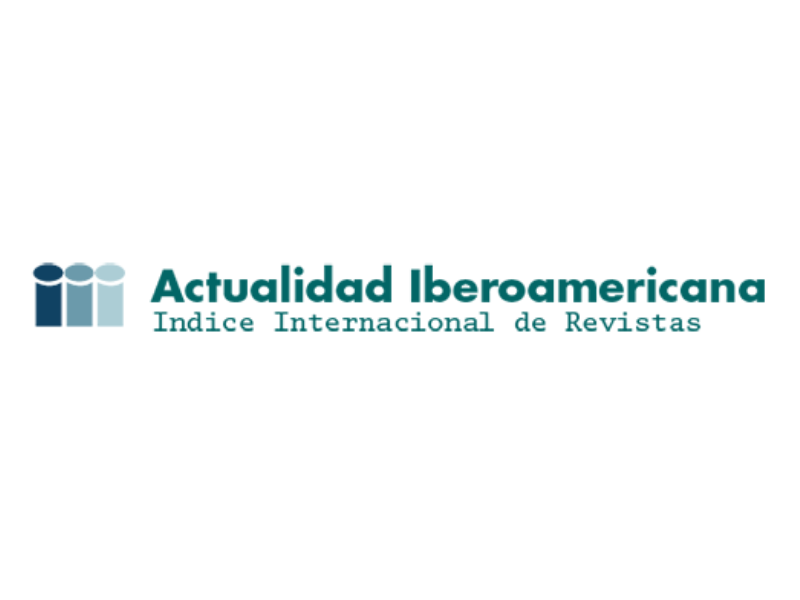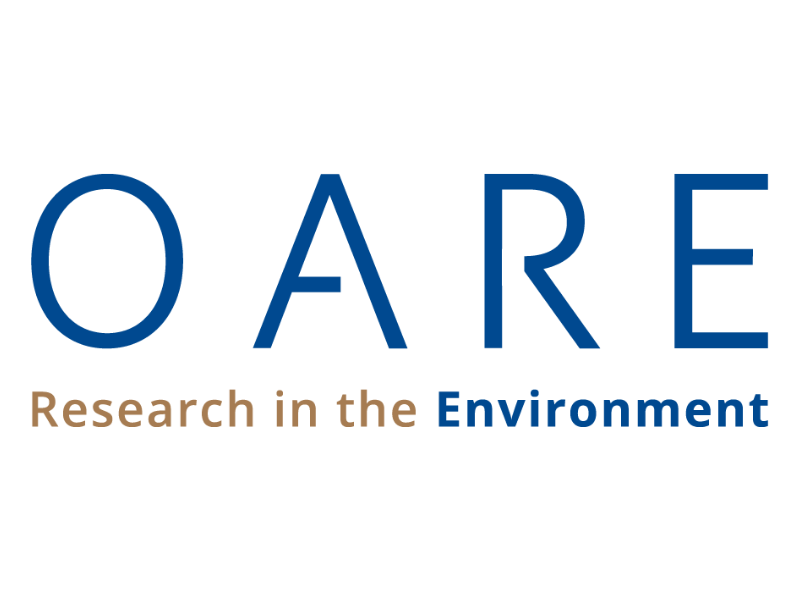Alimento vivo en la larvicultura de peces marinos: Copépodos y mesocosmos
Live food in the larviculture of marines fishes: Copepods and mesocosm
Mostrar biografía de los autores
El mesocosmos representa una excelente alternativa para incrementar la calidad y supervivencia de las larvas, dado que proporciona a estas, gran cantidad y variedad de presas pequeñas (nauplios) de excelente perfil bromatológico en cuanto al contenido de ácidos grasos poliinsaturados y aminoácidos se refiere. Los copépodos cultivados en conjunto con diferentes especies de microalgas, rotíferos y otros microorganismos en sistemas de mesocosmos, son importantes porque ellos son una de la fuentes de alimento vivo más importantes para la acuicultura marina, habiéndose demostrado que incrementan la supervivencia y la calidad de las larvas y alevinos que los consumen.
Visitas del artículo 4238 | Visitas PDF
Descargas
- Person-Le Ruyet J. Early weaning of marine fish larvae onto microdiets: constraints and perspectives. Advances in Tropical Aquaculture. Tahiti. Aquacop Infremer. Actes de Colloque 1989; 9: 625-642.
- Tandler A, Kolkovski S. Rates of ingestionand digestibility as limiting factors in the sucessful use microdiets in Sparus aurata larval rearing. In: Fish & Crustaceans Larviculture Symposium. Gent, Belgium. Proceedings European Aquaculture Society 1991; 169-171.
- Bengtson D. A comprehensive program for the evaluation of artificial diets. In: Fish & Crustaceans Larviculture Symposium. Gent, Belgium. Proceedings... European Aquaculture Society 1991; 142-143.
- Cestarolli M, Portella M. Determinação do "ponto de não retorno" alimentar em larvas de curimbatá Prochilodus scrofa (Pisces, Teleostei). In: Simposio Brasileiro de Aquacultura, 8. Resumos Piracicaba: ABRAQ 1994; 71.
- Lavens P, Sorgeloos P. Present status and prospects of the use of Artemia cysts and biomas in shirrmp forming. In: Brasil: Aquicultura 1998, Recife Anais Recife: ABRAQ, 1998; 1: 147-159.
- Cestarolli M, Portella M. Larvicultura de peixes, uma abordagem em escala piloto. Comunicação da Pesquisa Agropecuária 1994; 12: 28-29.
- Lavens P, Sorgeloos P. Manual on the production and use of live food for aquaculture. FAO Fisheries Technical Paper, 1996; 361: 1-295.
- Walford J, Lam T. Development of digestive tract and proteolytic enzyme activity in sea bass (Later calcarifer) larvae and juveniles. Aquaculture, 1993; 109: 187-205. https://doi.org/10.1016/0044-8486(93)90215-K
- Jomori R. Desenvolvimento, sobrevivencia e aspectos econômicos da produção de alevinos de pacu, Piaractus mesopotamicus (Holmberg, 1887), diretamente em viveiros ou com diferentes períodos de cultivo inicial de larvas em laboratório. Dissertação de Mestrado. Centro de Aqüicultura, Universidade Estadual Paulista, Jaboticabal, Brasil 2001; 69.
- Logato P. Nutrição e alimentação de peixes de água doce. Universidade Federal de Lavras-UFLA. Minas Gerais, Brasil 2000; 128.
- Sipaúba–Tavares L, Rocha O. Produção de plâncton (Fitoplâncton e Zooplâncton) para alimentação de organismos aquáticos. RiMa. São Carlos, Brasil 2003; 106.
- Coutteau P, Sorgeloos P. Manipulation of dietary lipids, fatty acids and vitamins in zooplankton cultures. Freshwater Biology 1997; 38: 501-512. https://doi.org/10.1046/j.1365-2427.1997.00239.x
- McKinnon A, Duggan S, Nichols P, Rimmer M, Semmens G, Robino B. The potential of tropical paracalanid copepods as live feeds in aquaculture. Aquaculture 2003; 223: 89-106. https://doi.org/10.1016/S0044-8486(03)00161-3
- Carvalho A, Olivia-Teles A, Bergot P. A preliminary study on the molecular weight profile of soluble protein nitrogen in live food organisms for fish larvae. Aquaculture 2003; 225: 445-449. https://doi.org/10.1016/S0044-8486(03)00308-9
- Ahlgren G, Goedkoop W, Markensten H, Sonesten L, Boberg M. Seasonal variations in food quality for pelagic and benthic inverbrates in Lake Erken-the role of fatty acids. Freshwater Biology 1997; 38: 555- 570. https://doi.org/10.1046/j.1365-2427.1997.00219.x
- Kubitza F. Nutrição e alimentação dos peixes cultivados. Ed. projeto Pacu/ Agropeixe, Campo Grande, Mato Grosso do Sul 1998, 108.
- Kolkovski S. Digestive enzimes in fish larvae and juveniles-implications and applications to formulated diets. Aquaculture 2001; 200: 181-201. https://doi.org/10.1016/S0044-8486(01)00700-1
- Portella M, Tasser M, Jomori R, Carneiro D. Substituição do alimento vivo na larvicultura. XII Simpósio Brasileiro de Aqüicultura, Goiania, Brasil 2002.
- Blair T, Castell J, Neil S, D'Abramo L, Cahu C, Harmon P, Ogunmoye K. Evaluation of microdiets versus live feeds on growth survival and fatty acid composition of larval haddock (Melanogrammus aeglefinus). Aquaculture 2003; 225: 451-461. https://doi.org/10.1016/S0044-8486(03)00309-0
- Zimmermann S, Jost H. Recentes avanços na nutrição de peixes: a nutrição por fases em piscicultura intensiva. In: II Simpósio Sobre Manejo e Nutrição de Peixes. Anais Piracicaba, Brasil 1998; 1213-1262.
- Hagiwara A, Gallardo W, Assavaaree M, Kotani T, de Araujo A.B. Live food production in Japan: recent progress and future aspects. Aquaculture 2001; 200: 111-127. https://doi.org/10.1016/S0044-8486(01)00696-2
- Hernández O, Álvarez-Lajonchère L. Culture experiments with Oithona oculata, Farran, 1913 (Copepoda: Cyclopoida), and its advantages as food for marine fish larvae. Aquaculture 2003; 219: 471-483. https://doi.org/10.1016/S0044-8486(02)00644-0
- Fregadolli C. Seleção alimentar de larvas de pacu Piaractus mesopotamicus Holmberg, 1887 e tambaqui Colossoma macropomum Cuvier, 1818, em laboratório. Boletim Técnico CEPTA 1993; 6: 1-50.
- Brett M, Müller-Navarra D. The role of highly unsaturated fatty acids in aquatic foodweb processes. Freshwater Biology 1997; 38: 483-499. https://doi.org/10.1046/j.1365-2427.1997.00220.x
- Nanton D, Castell J. The effects of dietary fatty acids on the fatty acid composition of the harpacticoid copepod, Tisbe sp., for use as a live food for marine fish larvae. Aquaculture 1998; 163: 251–261. https://doi.org/10.1016/S0044-8486(98)00236-1
- Payne M, Rippingale R, Cleary J. Cultured copepods as food for West Australian dhufish Glaucosoma hebraicum and pink snapper Pagrus auratus larvae. Aquaculture 2001; 194: 137–150. https://doi.org/10.1016/S0044-8486(00)00513-5
- Payne M, Rippingale R. Evaluation of diets for culture of the calanoid copepod Gladioferens imparipes. Aquaculture 2000; 187: 85–96. https://doi.org/10.1016/S0044-8486(99)00391-9
- Støttrup J, Norsker N. Production and use of copepods in marine fish larviculture. Aquaculture 1997; 155: 231-247. https://doi.org/10.1016/S0044-8486(97)00120-8
- Delbare D, Dhert P, Lavens P. Zooplancton. In: Lavens P, Sorgeloos P. (eds.). Manual on the production and use of live food for aquaculture. FAO Fisheries Technical Paper 1996; 361: 252-282.
- May R. Feeding larval marine fishes in the laboratory: a review. Calif Mar Res Commun Cal COFI Rep 1970; 14: 76– 83.
- Zismann L, Berdugo V, Kimor B. The food and feeding habits of early stages of Grey mullets in the Haifa bay region. Aquaculture, 1975; 6: 59– 76. https://doi.org/10.1016/0044-8486(75)90089-7
- Checkley DM Jr. Selective feeding by Atlantic herring Clupea harengus larvae on zooplankton in natural assemblages. Marine Ecology Progress Series 1982; 9: 245-253. https://doi.org/10.3354/meps009245
- McMichel RH Jr, Peten K. Early life history of spotted seatrout, Cynoscion nebulosus (Pisces: Sciaenidae), in Tampa Bay, Florida. Estuarios 1989; 12: 98–110. https://doi.org/10.2307/1351501
- Barnes R. Zoología de los invertebrados. Ed. Interamericana. Quinta edición, Bogotá, 1989; 957.
- Young F. 1994. Food preferences in tropical marine fish larvae. Aquaculture Magazine 1994; 1: 57-59.
- Hopp U, Maier G, Bleher R. Reproduction and adult longevity of five species of planktonic cyclopoid copepods reared on different diets: a comparative study. Freshwater Biology 1997; 38: 289–300. https://doi.org/10.1046/j.1365-2427.1997.00214.x
- Støttrup J. The elusive copepods: their production and suitability in marine aquaculture. Aquaculture Research 2000; 31: 703-711. https://doi.org/10.1046/j.1365-2109.2000.00488.x
- Coutteau P, Geurden I, Camara M, Bergot P, Sorgeloos P. Review on the dietary effects of phospholipids in fish and crustacean larviculture. Aquaculture 1997; 155: 149-164. https://doi.org/10.1016/S0044-8486(97)00125-7
- Lira G. Influência da dieta na reprodução e crescimento do copépode, Apocyclops procerus, e seu potencial como alimento na larvicultura do robalo-peva, Centropomus parallelus. Tese de Mestrado em Aquicultura, Universidade Federal de Santa Catarina, UFSC. Florianópolis, Brasil 2002; 41.
- Anonimo. Utilisation of copepod diets for larviculture of halibut, cod and turbot, and a review of published halibut research and cultivation data. Final Report on the EU Concerted Action Project AIR3 CT94 2094, coordinated by the Danish Institute for Fisheries Research 1997; 63.
- Nanton D, Castell J. The effects of temperature and dietary fatty acids on the fatty acid composition of harpacticoid copepods, for use as a live food for marine fish larvae. Aquaculture 1999; 175: 167–181. https://doi.org/10.1016/S0044-8486(99)00031-9
- Payne M, Rippingale R, Longmore R. Growth and survival of juvenile pipefish Stigmatopora argus fed live copepods with high and low HUFA content. Aquaculture 1998; 167: 237–245. https://doi.org/10.1016/S0044-8486(98)00318-4
- Mujica A, Carvajal C, Miranda O. Cultivo experimental de Tigriopus sp. (Copepoda: Harpacticoidea). Facultad de Ciencias del Mar. Universidad Católica del Norte. Invest Mar 1995; 23: 75-82.
- Tucker JW Jr. Marine Fish Culture. Kluwer Academic Publishers. London, UK. 1998; 750. https://doi.org/10.1007/978-1-4615-4911-6
- Álvarez-Lajonchère L, Hernández O. Producción de juveniles de peces estuarinos para un Centro en América Latina y el Caribe: dise-o, operación y tecnologías. World Aquaculture Society Baton Rouge USA 1991; 424.
- Nash C, Novotny A. (eds.). Production of aquatic animals: fishes. Elsevier Science BV Amsterdam 1995; 405.
- Ogle J, Lotz J. Culture of Red Snapper. Global Aquaculture Advocate 2000; 3: 23-26.
- Schipp G, Bosman J, Marshall A. A method for hatchery culture of tropical calanoid copepods Acartia sp. Aquaculture 1999; 174: 81-88. https://doi.org/10.1016/S0044-8486(98)00508-0
- Toledo J, Golez M, Doi M, Ohno A. Use of copepod nauplii during early feeding stage of grouper Epinephelus coioides. Fisheries Science 1999; 65: 390-397. https://doi.org/10.2331/fishsci.65.390
- Prieto G. Enriquecimento de zooplankton com oleo de peixe na larvicultura de pacu Piaractus mesopotamicus e curimbatá Prochilodus lineatus. Dissertaçao (Mestrado). Universidade Federal de Lavras- UFLA. Minas Gerais, Brasil 2003; 106.
- Pinto C, Souza-Santos L, Santos P. Development and population dynamics of Tisbe biminiensis Copepoda: Harpacticoida reared on different diets. Aquaculture 2001; 198: 253–267. https://doi.org/10.1016/S0044-8486(00)00582-2
- Støttrup J, Bell J, Sargent J. The fate of lipids during development and coldstorage of eggs in the laboratory-reared calanoid copepod, Acartia tonsa Dana, and in response to different algal diets. Aquaculture 1999; 176: 257–269. https://doi.org/10.1016/S0044-8486(99)00062-9























